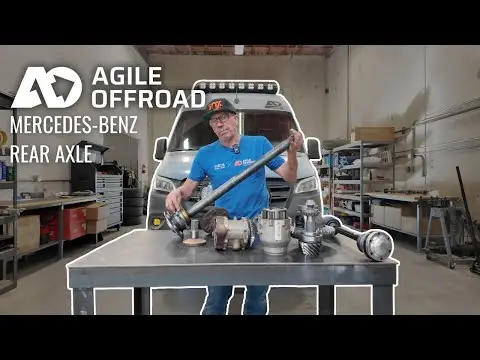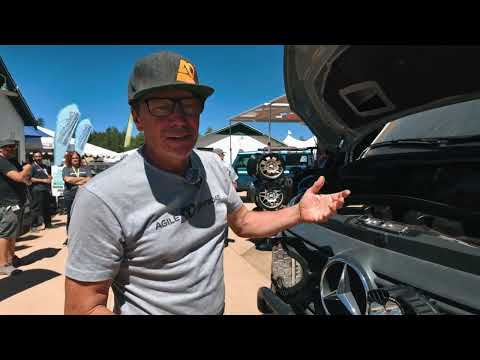Introduction
Sprinter vans have become a go-to choice for overlanders looking to build reliable and versatile rigs. At Agile, we’ve extensively serviced these vehicles, particularly focusing on gear changes and Air Locker installations. From our experience, Sprinter axles and differentials are remarkably robust, but like any mechanical components under heavy load, they do develop issues over time—especially in the high-demand environments typical of overlanding and RV use.
The Robustness of Sprinter Differentials
One key insight is that the factory differentials on Sprinter vans seldom fail. We have yet to encounter a differential failure in our extensive work on these vans, even those fitted with Air Lockers. The gear patterns generally hold up well, and internal components like pinion bearings rarely cause trouble unless there’s a significant maintenance lapse.
The most common failures we see arise from user errors such as running the differential with inadequate oil, which leads to bearing seizure and subsequent catastrophic damage. Another frequent cause is physical damage to the differential cover during off-road adventures, resulting in oil loss and accelerated wear.
Axle Splines: The Weak Link
While the differential is durable, the axles themselves, specifically the splines inside the axle bearing assembly, present a more vulnerable point. This component often wears out after extended use, typically at mileage ranges of 60,000 to 100,000 miles, especially on heavy vehicles like RV Sprinters.
The axle splines endure significant torsional stress as the vehicle shifts between Park and Reverse or negotiates challenging terrain. Over time, this back-and-forth torque action can maul the spline teeth, leading to clunky noises and eventual failure. When the splines fail, the axle spins freely, rendering the vehicle immobile in any drive mode, including 4WD or open differential setups.
The Role of the Air Locker in Protecting Axles
Installing an Air Locker can actually mitigate the risk associated with spline failure. If a spline bearing fails while the locker is engaged, the locker forces torque to both axles, enabling the vehicle to maintain traction and potentially drive home, even if one axle is compromised.
This contrasts with open differentials where torque is lost through the spinning axle, leaving the vehicle stranded. Furthermore, the locker changes the load dynamics on the axle—applying torque along a different axis—which may reduce torsional stress on the spline bearing compared to factory traction control braking methods.
Maintenance and Inspection Recommendations
Given the importance of the spline bearing, vigilance is crucial. Owners should listen for clunky noises when shifting between drive states and consider axle inspection if symptoms appear. At Agile, we offer inspections during locker installations, though this service incurs a fee.
While third-party axles and bearings can be sourced for servicing, we recommend using OEM Mercedes parts to ensure consistent reliability and longevity. Regular maintenance, oil checks, and careful off-road driving can significantly extend the lifespan of both axles and differentials.
Conclusion
Sprinter vans equipped for overlanding prove resilient in their drivetrain components, but understanding the specific weak points—namely the axle splines—and how lockers influence performance can help owners avoid costly breakdowns. Proper maintenance, careful driving habits, and informed upgrades will keep your Sprinter van rolling through the toughest adventures.
Watch the Original Video
Original video: https://www.youtube.com/watch?v=0zZ_rQ9CWWk


